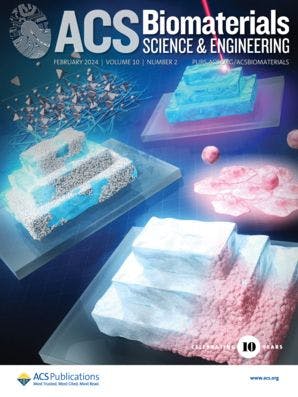As the global population increases, cultivated or lab-grown meat has emerged as a potential way to satisfy future protein needs. But could inexpensive plant proteins be used as the basis for animal-based cell cultures?

The global population has surpassed 8 billion, and it is fast approaching what scientists think is the maximum carrying capacity for our species. But this estimate is highly variable—and if everyone consumed only what they needed, then the Earth could possibly support a much higher number. A key consideration is our food, particularly finding sustainable ways to meet protein needs with less reliance on traditional agricultural and animal products. This is especially important when you consider that our current model of meat production contributes 15% of greenhouse emissions, occupies 77% of available land, uses 29% of water resources, and accounts for 70% of global antibiotic use.1,2
One proposed approach is lab-grown meat, but the cells being cultured need a base or scaffold to adhere to. These edible scaffolds need to mimic meat’s three-dimensional structure by organizing cells and bulking out the overall mass.3 Plant proteins have increasingly become attractive candidates since they are edible, abundant, and inexpensive.
Now, researchers in ACS Biomaterials Science & Engineering report using non-allergenic wheat protein as a scaffold to grow layers of striated muscle and flat fat, which could be combined to produce meat-like textures.4 To achieve this, natural glutenin was made into films with and without surface patterning—and in the absence of toxic cross-linking or stabilizing agents for cell culture related to cultivated meat goals. Glutenin has been used before to cultivate bovine muscle cells, but there is a knowledge gap around the changes in the mass balance between the cell and biomaterial compartments during cell culture. To be able to cultured meat cells at scale, it needs to be possible to expand growth in vitro in a rapid and reliable manner—ultimately to produce millions of tons of biomass every year.5

Cultivated Meat from Aligned Muscle Layers and Adipose Layers Formed from Glutenin Films
DOI: 10.1021/acsbiomaterials.3c01500
The new results showed that the films were stable in culture media for at least 28 days, and the surface patterns induced cell alignment and organization.4 Three-dimensional porous scaffolds made from soy protein have also been investigated for cultivated meat applications; these were found to be stable for a similar length of time as the glutenin, with good proliferation and differentiation of the target animal muscle cells.6 Other groups have tried a matrix made from gelatin and agar to grow a hybrid cultured meat composed of both animal cells and plant protein, which achieved a texture, flavor, and taste comparable to that of traditional meat.3
But there are still other constraints beyond the protein scaffold, including growth rates and cell death. Previous work in the field has explored genetically immortalizing cells, which could offer benefits over primary cells such as rapid growth, escape from cellular senescence, and consistent starting cell populations for production.5
Significant obstacles may still exist for lab-grown meat, but these new findings provide a good foundation for working out time in culture, as well as cell, biomaterial, and matrix ratios. The vision for developing cultivated meat centers around environmental conservation and animal welfare, and innovation is likely to continue in the field until we achieve a scalable, economic, and sustainable solution.
References
- Halagarda, M. and Wójciak, K. M. Health and safety aspects of traditional European meat products. A review. Meat Sci. 2022, 184, 108623.
- Naghavi, M. et al. Global burden of antimicrobial resistance: essential pieces of a global puzzle─Authors’ reply. Lancet 2022, 399, 2349–2350.
- Lee, M. et al. Tailoring a Gelatin/Agar Matrix for the Synergistic Effect with Cells to Produce High-Quality Cultured Meat. ACS Appl. Mater. Interfaces 2022, 14, 33, 38235–38245.
- Yao, Y. et al. Cultivated Meat from Aligned Muscle Layers and Adipose Layers Formed from Glutenin Films. ACS Biomater. Sci. Eng. 2024, 10, 2, 814–824.
- Stout, A. J. et al. Immortalized Bovine Satellite Cells for Cultured Meat Applications. ACS Synth. Biol. 2023, 12, 5, 1567–1573.
- Wei, Z. et al. Soy Protein Amyloid Fibril Scaffold for Cultivated Meat Application. ACS Appl. Mater. Interfaces 2023, 15, 12, 15108–15119.
